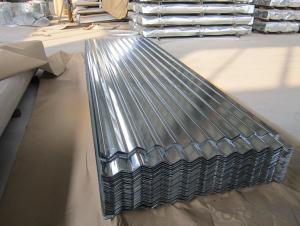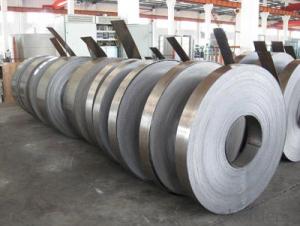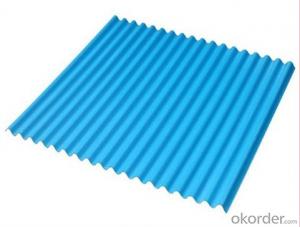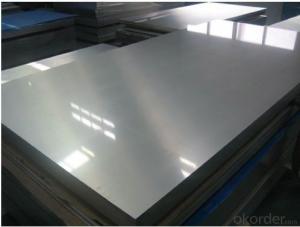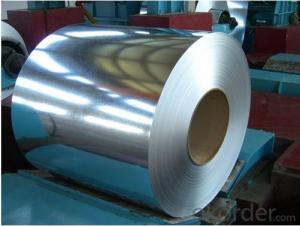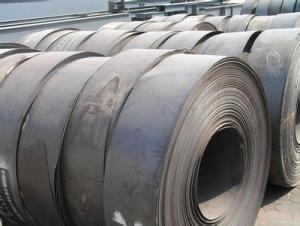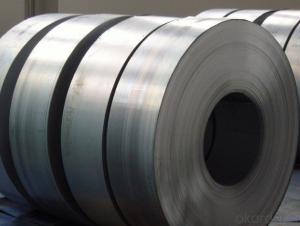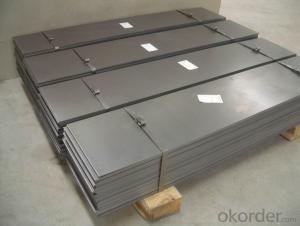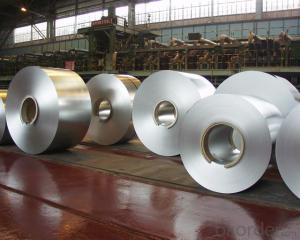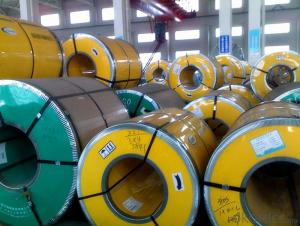Nickel Plated Copper Strips
- Loading Port:
- China Main Port
- Payment Terms:
- TT OR LC
- Min Order Qty:
- -
- Supply Capability:
- -
OKorder Service Pledge
OKorder Financial Service
You Might Also Like
Specifications
nickel plated copper strips
1. Purity: more than 99.7%
2. Strip Thickness: 0.05mm above
3. Resistance to corrosion in acid
nickel plated copper strips
Grade | Ni201 |
Standard | ASTM B162 |
Size | T0.05-0.5mm×W250mm×coil Slitting the width according to the requirements of customers’ |
Application | Metallurgy, electronics, chemical, petroleum, pharmaceutical, aerospace and other |
We supply Pure Nickel strip, the pure nickel strip has good mechanical properties over a wide range of temperature and excellent resistance to corrosive.
We could provide SGS test report and RoHs report.
Welcome to place a sample order.
- Q:Are steel strips suitable for making automotive parts?
- Yes, steel strips are suitable for making automotive parts. Steel is a commonly used material in the automotive industry due to its high strength, durability, and versatility. Steel strips can be easily formed, shaped, and welded to create various automotive components such as body panels, frames, brackets, and reinforcements. Additionally, steel offers excellent resistance to impact, corrosion, and heat, making it an ideal choice for automotive applications.
- Q:What are the common width tolerances for steel strips?
- The width tolerances for steel strips can vary depending on the specific application and industry standards. Typically, the common range for width tolerances is between +/- 0.005 to 0.020 inches. These tolerances are essential in ensuring that the steel strips meet the necessary dimensional specifications and can be effectively utilized in various manufacturing processes. It should be noted that the width tolerances may differ based on factors such as the grade of steel, the intended use of the strips, and the manufacturing process involved. Moreover, certain industries or applications may have stricter tolerances to guarantee precise and accurate dimensions according to their specific requirements. Therefore, consulting the appropriate industry standards or specifications is crucial in determining the suitable width tolerances for steel strips in a given context.
- Q:How are steel strips used in the manufacturing of hand tools?
- Steel strips are used in the manufacturing of hand tools to provide strength and durability. These strips are often shaped and molded into various components of the tools, such as blades or handles, to ensure they can withstand the rigors of everyday use. Additionally, the steel strips may be heat-treated to enhance their hardness and resistance to wear, making them ideal for cutting, gripping, or hammering tasks.
- Q:How are steel strips used in the production of electrical contacts?
- Steel strips are used in the production of electrical contacts as they provide the necessary strength and conductivity required for reliable electrical connections. These strips are typically made of high-quality steel alloys that offer excellent electrical conductivity while exhibiting good mechanical properties. The steel strips are first cut into precise dimensions and then undergo various manufacturing processes to shape them into the desired form of electrical contacts. They are often stamped or punched to create the required shape, such as flat or curved contacts. Once the contacts are formed, they are often plated or coated with a thin layer of precious metals like silver or gold. This plating enhances the electrical conductivity of the contacts and also provides corrosion resistance, ensuring long-term reliability of the electrical connections. Steel strips are also used as the base material for bimetallic contacts, which are commonly used in devices where temperature changes can affect the performance of electrical connections. Bimetallic contacts consist of two different metals bonded together, with one metal strip made of steel and another made of a material with a different coefficient of thermal expansion. This combination allows the contacts to expand and contract at different rates, ensuring reliable electrical connections even under varying temperature conditions. In summary, steel strips play a crucial role in the production of electrical contacts by providing the necessary strength, conductivity, and versatility required for various applications. Whether used as standalone contacts or as part of bimetallic structures, steel strips form the backbone of reliable electrical connections in a wide range of devices and systems.
- Q:What are the standard tolerances for steel strips?
- The standard tolerances for steel strips can vary depending on the specific industry and application. However, some common tolerances for steel strips typically include thickness variations within +/- 0.005 inches, width variations within +/- 0.010 inches, and length variations within +/- 0.030 inches. It is important to consult the relevant industry standards and specifications to determine the precise tolerances required for a specific steel strip application.
- Q:Are steel strips used in the production of electrical appliances?
- Indeed, it is common to utilize steel strips in the fabrication of electrical appliances. These strips not only furnish the appliance with robustness and resilience, but also function as a safeguarding outer covering. Their application extends to the construction of diverse constituents including casings, frames, and brackets. Furthermore, in specific electrical appliances like transformers, steel strips can serve as conductors. Consequently, the incorporation of steel strips in the manufacturing process of electrical appliances plays a vital role in guaranteeing their endurance and dependability.
- Q:What is the typical wear resistance of steel strips?
- The typical wear resistance of steel strips can vary depending on factors such as the specific type of steel used, its hardness, surface finish, and the conditions in which it is exposed to wear. However, steel strips are generally known for their excellent wear resistance, making them suitable for a wide range of applications requiring durability and resistance to friction or abrasion.
- Q:What are the common maintenance practices for steel strips?
- Common maintenance practices for steel strips include regular cleaning to remove dirt, dust, and other debris that can potentially cause corrosion. It is also important to inspect the strips for any signs of damage or wear, such as rust or dents, and address them promptly to prevent further deterioration. Applying a protective coating or paint can help prevent rusting and extend the lifespan of the steel strips. Additionally, storing the strips in a dry and well-ventilated area can help prevent moisture accumulation, which can lead to corrosion.
- Q:What are the different sizes of steel strips available?
- A wide variety of sizes are offered for steel strips to meet the needs of different industries and applications. Steel strips come in different widths, thicknesses, and lengths. When it comes to width, steel strips can be as narrow as a few millimeters or as wide as several hundred millimeters, depending on their intended use. Narrow steel strips are commonly used in applications like electrical enclosures, automotive components, and small-scale machinery. On the other hand, wider steel strips are often used in construction, the manufacturing of large equipment, and for structural purposes. The thickness of steel strips can also vary greatly. Thin steel strips, typically measuring a few millimeters or less, are used in applications that require flexibility and weight reduction, such as the production of electronic devices, packaging materials, and thin-walled tubing. Thicker steel strips, ranging from several millimeters to a few centimeters, are used in heavy-duty applications like construction, shipbuilding, and industrial machinery. Steel strips are commonly supplied in coil form, which makes handling and transportation easier. The length of steel strips in a coil can vary depending on the manufacturer and customer requirements. Standard coil lengths typically range from a few meters to several hundred meters, ensuring that steel strips can be easily cut and shaped to fit specific project needs. In conclusion, the availability of steel strip sizes is extensive, with variations in width, thickness, and length, allowing for a wide range of applications across various industries.
- Q:How are steel strips different from steel coils?
- Steel strips and steel coils differ in terms of their shape and size. Steel strips are narrow, flat pieces of steel that are typically less than 600mm in width, while steel coils are large rolls of steel that can be several meters wide. Additionally, steel strips are usually produced by cutting larger coils into narrower strips, whereas steel coils are directly produced in the desired size.
1. Manufacturer Overview |
|
|---|---|
| Location | |
| Year Established | |
| Annual Output Value | |
| Main Markets | |
| Company Certifications | |
2. Manufacturer Certificates |
|
|---|---|
| a) Certification Name | |
| Range | |
| Reference | |
| Validity Period | |
3. Manufacturer Capability |
|
|---|---|
| a)Trade Capacity | |
| Nearest Port | |
| Export Percentage | |
| No.of Employees in Trade Department | |
| Language Spoken: | |
| b)Factory Information | |
| Factory Size: | |
| No. of Production Lines | |
| Contract Manufacturing | |
| Product Price Range | |
Send your message to us
Nickel Plated Copper Strips
- Loading Port:
- China Main Port
- Payment Terms:
- TT OR LC
- Min Order Qty:
- -
- Supply Capability:
- -
OKorder Service Pledge
OKorder Financial Service
Similar products
New products
Hot products
Hot Searches
Related keywords







